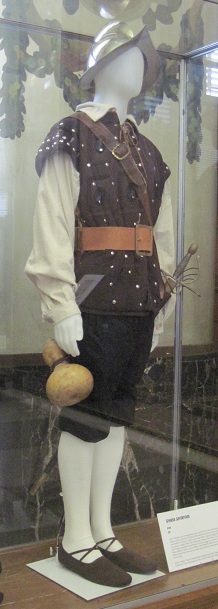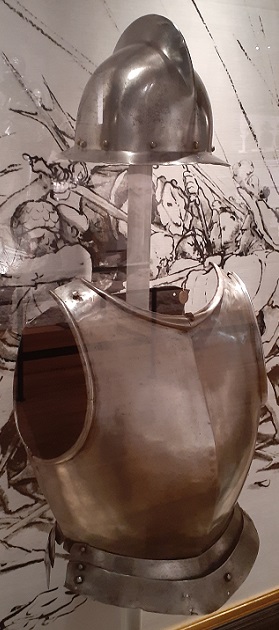Subject: jinete light cavalry
Culture: Spanish
Setting: Spanish empire late 15th - 16thc
Object: armor = helmet, cuirass
Royal Armouries Museum > War Gallery *
"Comb morion Probably Spanish, about 1520-30
Of an early form, struck with unidentified marks at the front and rear of the brim.
The morion became the most popular infantry helmet of the 16th century." ...
"Cuirass Probably Spanish, about 1510-20
For infantry or light cavalry use. The backplate,
which is struck with an unidentified maker's mark,
was not originally made for the breastplate with which it is now shown."
* Bob Bullock Texas State Historical Museum > Land
* Bob Bullock Texas State Historical Museum > Land
Museo de Cera > 2a Galeria *
* Texas Hall of State
"SPANISH ADVENTURER SPAIN 1519 Now reffered [SIC] to as Conquistadors,
the term did not exist until many years after their arrival to the New World.
In the Americas these adventurers/explorers resembled a volunteer militia
more than a regular organized military in that they had to supply their own materials, weapons and horses.
The full body armor and bulbous pantaloons portrayed in many images was rarely if ever worn by these soldiers.
Only a senior officer could possibly afford the expense of armor.
Most others wore helmets and some type of thick cotton gambeson shirt to protect their torsos.
Hernando de Soto, Luis de Moscoso Alvarado, and Alonso de Leon."

